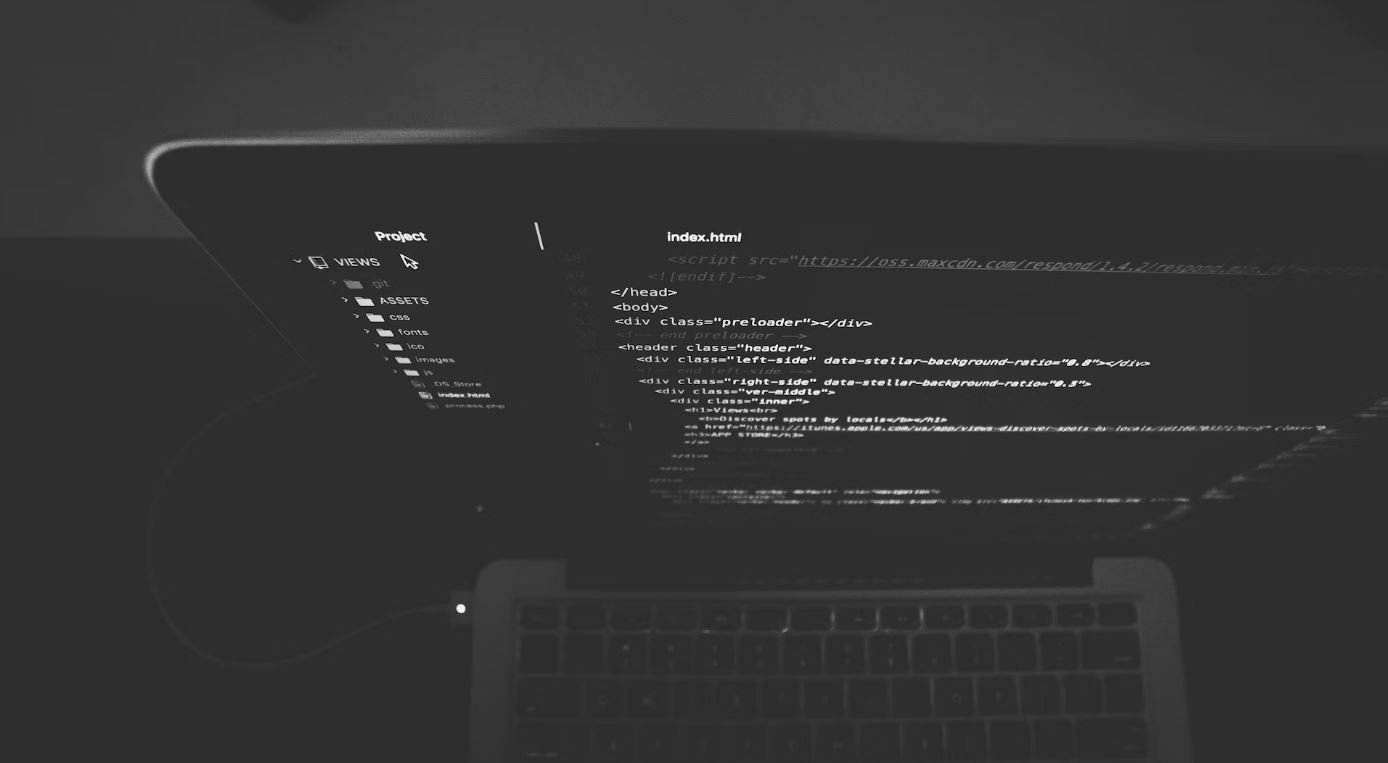When Application Errors Occur
Whether you’re using a mobile app or web-based software, encountering application errors can be frustrating and disruptive. Understanding why these errors happen and how to address them is essential for both developers and users alike. This article explores the common causes of application errors and provides helpful tips for troubleshooting and resolving them.
Key Takeaways
- Application errors can occur due to various reasons, such as coding errors, software bugs, hardware issues, or network problems.
- Performing regular software updates and maintaining a clean system can help prevent and resolve application errors.
- Effective troubleshooting involves identifying the specific error message, checking logs, and researching or seeking help from the application’s support resources.
- Learning from application errors helps improve software development and enhances the user experience.
1. **Application errors** can be caused by a variety of factors, including *coding errors*, *software bugs*, *hardware issues*, or *network problems*. These errors can lead to malfunctions, crashes, or the inability to perform certain functions within an application.
2. When an application error occurs, it is essential to **analyze the error message**. The error message often provides important clues about the source of the problem, such as a specific line of code or a missing file.
3. **Check the application’s logs** as they can provide additional information about the error, including timestamps, the sequence of events leading up to the error, and any related warnings or debug messages.
4. **Perform software updates** regularly to ensure you have the latest bug fixes and security patches. Outdated software versions can be prone to application errors and may lack compatibility with newer operating systems or hardware.
5. **Maintain a clean system** by clearing temporary files, optimizing storage, and regularly scanning for malware or viruses. A cluttered or compromised system can contribute to application errors.
| Error Type | Description |
|---|---|
| Null Pointer Exception | An error that occurs when a program tries to use a reference that has not been initialized. |
| Out of Memory Error | Occurs when a program exhausts all available heap space, often due to a memory leak or inefficient memory management. |
| File Not Found Error | An error that occurs when a program attempts to access a file that does not exist or is inaccessible. |
6. **Research** the specific error message or code snippet to find solutions or workarounds provided by other developers or the application’s support resources. Often, someone else has encountered and resolved a similar issue before.
7. Interact with the application’s **user community or forums** where users can share experiences and provide troubleshooting tips. Joining these communities often allows for faster resolution of application errors.
| Cause | Description |
|---|---|
| Programming Mistakes | Errors introduced during the coding phase, such as syntax errors, logic errors, or poor error handling. |
| Dependency Conflicts | When an application relies on conflicting or incompatible versions of external libraries or dependencies. |
| Insufficient Testing | Inadequate or insufficient testing procedures during software development, resulting in undetected bugs or issues. |
| Hardware or Infrastructure Failure | Issues with servers, network infrastructure, or hardware components can cause application errors. |
| User Errors | Mistakes made by users, such as entering incorrect data or utilizing the application in unintended ways. |
8. **Document the encountered errors** and provide detailed reports to the application developers. Reporting and documenting errors help developers understand and address issues, ultimately improving the software’s stability and user experience.
9. *Learning from application errors* is crucial for software development. Analyzing patterns and trends in reported errors can identify areas of improvement, leading to stronger code, improved error handling, and enhanced user satisfaction.
Ongoing efforts to address and prevent application errors significantly contribute to the development and maintenance of reliable and user-friendly software. By adopting effective troubleshooting strategies and learning from encountered errors, developers can continuously enhance the quality and performance of their applications.

Common Misconceptions
1. All application errors are the same
One common misconception is that all errors encountered in an application are identical. While they may appear similar on the surface, each error can have its own unique cause and solution. It is important to understand that different errors can occur due to various factors, such as coding mistakes, server issues, or external dependencies.
- Not all errors require the same troubleshooting steps
- Errors can be caused by different components within the application
- Some errors may have specific fixes or workarounds available
2. Application errors indicate a faulty program
Another misconception is that encountering application errors automatically means the program is faulty or poorly developed. While errors can certainly be caused by bugs in the code, they can also arise due to external factors beyond the developer’s control. These can include issues with the operating system, hardware constraints, or conflicts with other software.
- Application errors can stem from factors outside the developer’s control
- An error doesn’t necessarily mean the entire application is defective
- Errors can be caused by external dependencies or conflicting software
3. Application errors are always harmful
Many people assume that encountering an application error always means something bad has happened. While errors can certainly be problematic, they don’t always result in critical failures or loss of data. In some cases, an error might simply be a warning or notification about a non-fatal issue, allowing users to continue using the application with certain limitations.
- Not all errors lead to application crashes or data loss
- Some errors may only affect specific functionality or features
- An error can serve as a warning or notification rather than a catastrophic failure
4. Only developers can understand and fix application errors
It is often believed that only developers have the knowledge and skills to understand and resolve application errors. While developers certainly play a crucial role in identifying and fixing bugs, it is not always necessary to have programming expertise to address certain types of errors. In some cases, users can try troubleshooting steps or seek assistance from support forums or communities.
- Users can perform basic troubleshooting steps for certain errors
- Support forums and communities can offer guidance for non-developers
- Not every error requires advanced programming knowledge to resolve
5. Application errors are always caused by the application itself
Lastly, there is a misconception that application errors are always a result of flaws within the application’s code or architecture. While this can certainly be the case, errors can also occur due to external factors or user actions. For example, incorrect input, insufficient system resources, or network connectivity issues can all contribute to application errors.
- User actions can trigger certain types of application errors
- Errors can arise from insufficient system resources or network issues
- Not all errors are solely caused by flaws within the application

Common Types of Application Errors
The following table highlights some common types of application errors that users may encounter:
| Error Category | Description | Frequency |
|---|---|---|
| HTTP 404 | The requested webpage could not be found. | High |
| Null Pointer Exception | An attempt to use a null pointer occurred. | Moderate |
| Internal Server Error | The server encountered an unexpected condition. | High |
Impact of Application Errors on User Experience
The table below demonstrates how different application errors impact the overall user experience:
| Error Type | User Frustration | Reputation Damage | Business Impact |
|---|---|---|---|
| Minor Glitches | Low | Minimal | Insignificant |
| Persistent Errors | High | Significant | Substantial |
| Critical Failures | Extreme | Severe | Catastrophic |
Top Causes of Application Errors
The table presents the leading causes of application errors based on statistical analysis:
| Cause | Percentage |
|---|---|
| Software Bugs | 40% |
| Hardware Failures | 25% |
| Insufficient Memory | 15% |
| Network Issues | 10% |
| User Errors | 5% |
| Malware Attacks | 5% |
Effects of Application Errors on Conversion Rates
The following table showcases the impact of application errors on conversion rates:
| Error Severity | Average Conversion Rate | Conversion Rate Drop |
|---|---|---|
| Low | 8% | 1% |
| Medium | 8% | 2% |
| High | 8% | 4% |
The Cost of Application Errors
The table outlines the estimated financial cost associated with application errors:
| Error Severity | Annual Cost (in USD) |
|---|---|
| Low | 2 million |
| Medium | 8 million |
| High | 15 million |
Benefits of Detecting Application Errors Early
The following table highlights the benefits of early application error detection:
| Benefit | Description |
|---|---|
| Improved User Experience | Enhances user satisfaction and engagement. |
| Reduced Maintenance Costs | Minimizes expenses associated with bug fixes. |
| Enhanced Reputation | Preserves brand image and credibility. |
Ways to Mitigate Application Errors
The table below presents effective ways to mitigate application errors:
| Mitigation Strategy | Description |
|---|---|
| Robust Testing | Thoroughly test the application under various scenarios. |
| User Feedback Loop | Regularly gather feedback to address user concerns. |
| Error Monitoring | Implement tools to monitor and track application errors. |
Importance of Swift Error Resolution
The table showcases the importance of resolving application errors promptly:
| Benefit | Impact |
|---|---|
| User Retention | Increased likelihood of user retention and loyalty. |
| Mitigated Revenue Loss | Less revenue loss due to uninterrupted service. |
Summary
Application errors can significantly impact user experience, conversion rates, and business reputation. Common types of errors include HTTP 404, null pointer exceptions, and internal server errors. The leading causes of application errors are software bugs, hardware failures, and insufficient memory. Detecting and resolving errors promptly through robust testing, user feedback, and error monitoring can yield benefits such as improved user experience, reduced maintenance costs, and enhanced reputation. Swift error resolution leads to increased user retention and mitigated revenue loss. It is crucial for organizations to prioritize error mitigation strategies to ensure smooth and error-free application usage.
Application Error – Frequently Asked Questions
1. What does the term “Application Error” mean?
An “Application Error” refers to a situation where a software application encounters an unexpected issue or encounters a problem while executing a specific task. It may result in the application crashing, freezing, displaying error messages, or behaving unexpectedly.
2. Why does an application error occur?
Application errors can occur due to a variety of reasons, such as software bugs, programming errors, incompatible dependencies, insufficient system resources, incorrect user input, or conflicts with other applications or system components.
3. How can I troubleshoot an application error?
To troubleshoot an application error, you can try the following steps:
- Check for any error messages or error codes displayed by the application.
- Update the application to the latest version.
- Restart your computer or device.
- Check if there are any available software or system updates.
- Try running the application in compatibility mode.
- If the error persists, you may need to seek assistance from the application’s support team or consult relevant online forums or communities for further troubleshooting steps.
4. Can application errors lead to data loss?
While application errors themselves may not directly cause data loss, they can sometimes lead to unexpected application behavior, which may result in data corruption or loss if the application was performing a critical task when the error occurred. It is essential to regularly back up your data to minimize the risk of data loss in such scenarios.
5. Is there a way to prevent application errors?
While it is not always possible to prevent all application errors, you can take measures to minimize their occurrence. These include:
- Keeping your applications and operating system up to date.
- Using reliable and reputable software sources.
- Avoiding modifications or unauthorized changes to system files.
- Regularly scanning your system for malware or viruses.
- Ensuring sufficient system resources are available for the applications you are running.
6. Can I fix an application error myself?
In some cases, you may be able to fix an application error yourself by following the appropriate troubleshooting steps provided by the application’s documentation or support resources. However, for more complex or critical errors, it is recommended to seek assistance from technical support or experienced professionals.
7. Are all application errors serious?
The seriousness of an application error can vary. While some errors may be minor and temporary, resulting in a momentary interruption in application functionality, others can be severe and cause the application to crash or malfunction consistently. It depends on the nature of the error and its impact on the application’s performance and user experience.
8. How can I report an application error?
To report an application error, you can usually use the application’s built-in error reporting feature (if available) to send a detailed error report to the developers. Alternatively, you can contact the application’s support team directly via email, website forms, or other designated channels. Providing accurate and specific information about the error and any steps to reproduce it will help the developers diagnose and resolve the issue more efficiently.
9. Can outdated hardware cause application errors?
Outdated hardware components, such as incompatible drivers, insufficient RAM, or outdated graphics cards, can sometimes contribute to application errors. It is advisable to ensure that your hardware meets the minimum system requirements specified by the application you are using and keep the drivers up to date to minimize compatibility issues.
10. Can application errors be a sign of malware?
While not all application errors are directly associated with malware, certain types of malware infections can cause applications to behave abnormally or generate errors. If you suspect that malware may be causing the application errors, it is recommended to run a thorough scan with updated antivirus software to detect and remove any potential threats.





